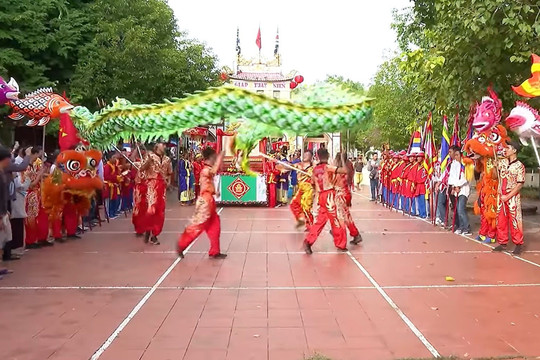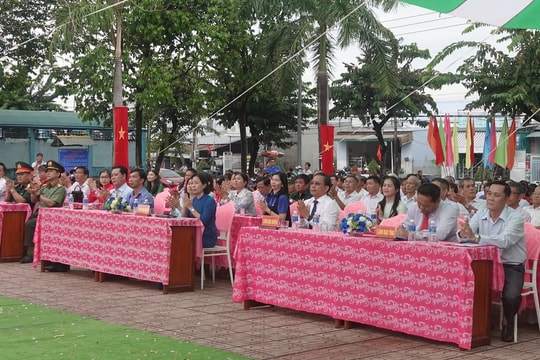Because of disrespecting her father, the princess was accused of treason and exiled to an abandoned island. After many days, the crew headed to the Southeast. There was a small island shaped like a giant mackerel called Lao Thu Island (Phu Quy Island at present). Princess Ban Tranh and her entourage set up tents at the foot of Cao Cat mountain (in Dong Hai village, Long Hai commune) removed weeds, cut down trees, found water sources, grew food crops, caught fish, explored the island... and created an independent life. Later, the next king issued an edict that allowed Princess Ban Tranh to go back to the mainland. However, because of the love story and pain from the past, the princess refused and chose life on the beautiful East Sea island.
When the princess passed away, people on Phu Quy Island built a tomb to worship the island princess on Cao Cat Mountain. The kings from the Nguyen and Minh Mang dynasties to King Khai Dinh awarded her 8 titles and assigned Phu Quy locals to take turns worshiping and incensing for her contributions. Today, visitors to Phu Quy island see an ancient temple built quite grandly at the foot of Cao Cat mountain. The entrance gate is delicately and artistically carved. Ban Tranh Princess (Posah ina) Temple - often called Ba Chua Temple. In 2015, this temple was ranked as a national historical and cultural relic by the Ministry of Culture, Sports and Tourism.
When the princess passed away, people on Phu Quy Island built a tomb to worship the island princess on Cao Cat Mountain. The kings from the Nguyen and Minh Mang dynasties to King Khai Dinh awarded her 8 titles and assigned Phu Quy locals to take turns worshiping and incensing for her contributions. Today, visitors to Phu Quy Island see an ancient temple built quite grandly at the foot of Cao Cat Mountain; it is often called Ba Chua Temple. In 2015, this temple was ranked as a national historical and cultural relic by the Ministry of Culture, Sports, and Tourism.

The entrance gate is delicately and artistically carved
Throughout much of history, the Ba Chua Temple still exists on Pearl Island as an affirmation of the sovereign position of the first Vietnamese ethnic residents, who reclaimed the beautiful, shimmering land in the middle of the East Sea. Annually, on the 3rd day of the first lunar month, the temple opens for Phu Quy people to organize the welcoming of the Princess to the temple festival and perform solemn worshiping rituals. During festivals, there are also many types of unique folk cultural performances of the islanders such as Cheo Ba Trao, Boi singing, Tu Linh dance... This is an occasion when many tourists from the mainland and locals remember the Ban Tranh Princess's contribution to the building of Cu Lao Thu Island and enjoy the ceremony. The ritual of worshiping Princess Ban Tranh has long become the most common and sacred belief of the islanders. In people's minds and hearts, Princess Ban Tranh is not only a very spiritual deity but she also protects and assists people in their careers and lives.
Ba Chua Temple is a national historical-cultural relic, over the years, Phu Quy has preserved it and developed tourism at the same time. The combination of tourism and historical monuments is gradually bringing positive results. Most of the relics have typical values in architecture, art, history, and culture. Exploiting historical and cultural relics to develop tourism such as Ba Chua Temple not only brings socio-economic benefits and promotes the development of the tourism industry but also contributes to preserving and promoting its values—inherent characteristics.






.jpg)
















.jpeg)

.jpeg)


.jpeg)





